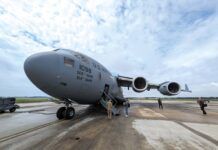An instrument-rated pilot called me a while back, seeking an IPC to prepare for a trip he wanted to make. Unfortunately, it had been nearly a year since he’d flown at all.
So we set out one night in his favorite G1000-equipped C-182. To our mutual disappointment but not surprise, we discovered that his IFR skills had badly atrophied. On a missed approach while turning to avoid heavy weather, he became disoriented and at one point allowed the airspeed to decay to 57 knots before I shoved the forgiving 182’s nose down. Learning had stopped; it was time to land.
Our home airport then had only a VOR approach toward the southeast. Being north of the field, we expected a straight-in approach. We were surprised when the controller told us we might have to hold for a few turns because the aircraft that just flew the approach hadn’t closed its flight plan.
The controller was as frustrated as we were. We just wanted to land and the controller wanted to let us, but the rules said the Arrow was still traffic. He asked if I’d try to talk to the Arrow on CTAF. Fortunately, the Arrow answered my first call. The conversation was revealing.
Me: “ATC wants to know if you landed.”
Arrow: “Yeah, I’m clear of the runway and taxiing to parking.”
Me: “Oh, OK. Approach control is waiting for you to close your flight plan. He won’t let us start our approach until you do.”
Arrow: “Well, he told me ‘radar service terminated.'”
Me: “Ah. He probably terminated your radar service because you had to change frequencies. I think when that happens, your flight plan stays open until you actually close it or they come looking for you. Would you like me to relay closing your flight plan?”
Arrow: “Sure. Uh, thanks.”
I informed the controller of my conversation with the Arrow and our next instruction was the welcome, “Cessna 35 Zulu, cleared straight-in for the VOR Runway 15 approach.”
“Radar Service Terminated”
The phrase means only what it says. The AIM Pilot/Controller Glossary says it is used “to inform a pilot that he/she will no longer be provided any of the services that could be received while in radar contact.” It says nothing about closing an IFR flight plan.
The only time you’re not personally responsible to close your IFR flight plan is upon landing at your destination with a tower that’s open. In that case, the tower will close your IFR flight plan. Other than that, you and only you can initiate the closure, although somebody else can relay the message as I did for the Arrow, above.
Another gotcha is when, upon hearing “Radar service terminated,” some pilots reach over to set the transponder to 1200. The pilot may think that reasonable because we are near the FAF. They infer mistakenly that because radar service has been terminated the squawk is no longer necessary.
Not so. Unless the controller adds “Squawk VFR,” leave the transponder alone. Why? In case you have to miss, the controller will have to re-identify you and that’s easier done if you remain on your assigned code.
Many pilots who use non-tower airports have a good idea of the surrounding terrain, and if the weather will permit landing without re-entering IMC. I favor just canceling IFR while airborne if those conditions are met. It’s one less thing to remember after you’re on the ground and other priorities intervene. I also like canceling with the source because someone else can fly the approach immediately afterward. One thing to consider is that, as on a visual approach, by canceling you eliminate the option to miss. If you’re at all unsure about being able to land, keep your clearance all the way to the ground.
ATC always instructs us to cancel with them if airborne, or via FSS or a remote communications outlet on the ground after landing, sometimes emphatically. It feels like they’re pressing us a little, but as we’ve seen, people often forget to close once they land. When we cancel airborne the controller may sound relieved, as if he’s dodged a potential issue. Maybe he has a point.
When They Don’t Tell You
The controller’s handbook says “Radar service terminated” is not a required call if an aircraft has been instructed to change to a tower or advisory frequency although many controllers do so anyway. This applies to IFR and VFR aircraft. Once ATC can no longer talk with you—such as at a non-tower airport or an airport with a tower that has no radar feed, radar service is obviously impossible.
Nor is the call required when an arriving VFR aircraft is instructed to change to tower or advisory frequency having received radar service to a tower-controlled airport within Class B, C or TRSA airspace or where basic radar service is provided. However, at tower-controlled airports where radar coverage does not exist to within half a mile of the end of the runway, arriving aircraft must be informed when radar service is terminated.
If you cancel your IFR flight plan, radar service automatically ends unless you say, “We’d like to stay with you for advisories,” or words to that effect. Basic radar service continues, however, if you are inside Class B, C or TRSA airspace or wherever ATC communication is required.
Sometimes this is impossible. Our airport lies beneath a Class C shelf. The controller must turn us loose so we can make position calls on the advisory frequency. That places us inside Class C without ATC communication. One day I was flying with an FAA inspector and he nearly freaked out over this, but it’s routine.
Enroute
On those increasingly rare occasions when you’re out of radar coverage, the controller will say either “Radar contact lost” or “Radar service terminated.” Either way, you must now make position reports over mandatory reporting points such as designated VORs and intersections along your route of flight.
Recall that compulsory reporting points are depicted on AeroNav IFR enroute charts by solid triangles. They seem few and far between. Position reports over fixes with open triangles are noncompulsory, and only necessary when requested by ATC.
If you are on a GPS direct route or otherwise off-airways, then you report over the fixes used in the flight plan that define your route because they automatically become compulsory. Compulsory reporting points are also mandated when flying a VFR-on-top clearance.
A standard position report starts, as all radio calls should, with your call sign. Tell them you’re making a position report, the name of the fix, the time and altitude you were over the fix, the name and your estimated time over the next fix, and the name of the fix after that.
“Radar Contact Lost”
This phrase is issued by ATC when radar data used to locate your position is no longer being received or is unreliable, resulting in loss of service. On one IFR flight the controller caught us by surprise when he informed us, “Radar contact lost.” We recycled the transponder without effect but journeyed on as a primary target, meaning that the radar was bouncing off the airplane (mainly the propeller). ATC never asked for mandatory reports. So, yes, it is (sometimes) possible to win on the road.
Fred Simonds is an active CFII in Florida. See his web page at www.fredonflying.com.




